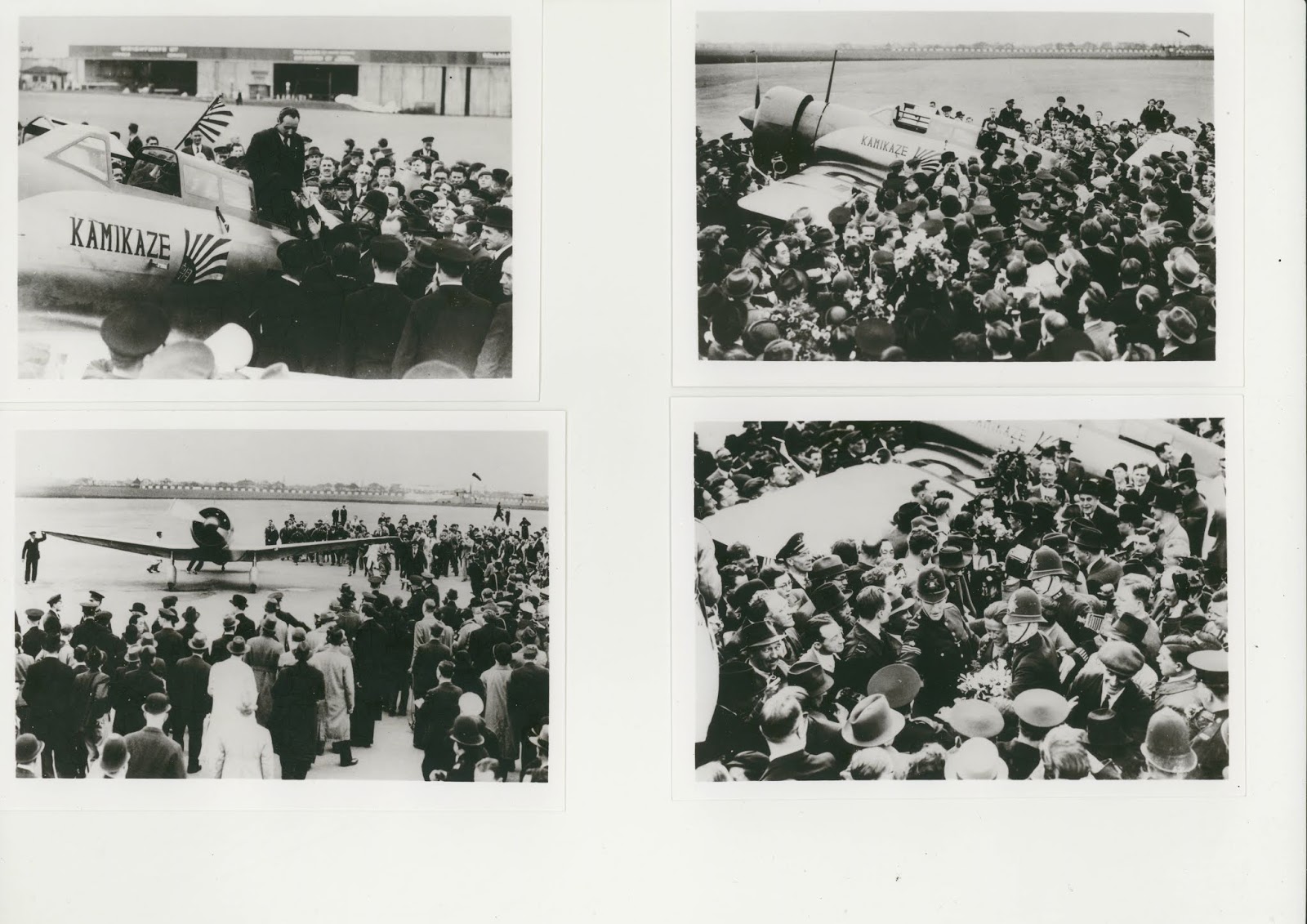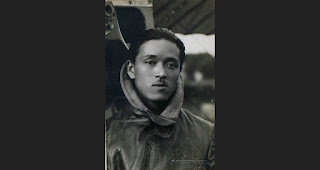New Photos From Croydon

Amazing images from April, 1937 as the Kamikaze-go landed at Croydon, London. From my new friends at the HCAT Archives, Peter Skinner and Ian Forsyth. Record breaking flight from Tokyo. Can you spot Tsukagoshi climbing out of the airplane in the first picture? That's the easy one. Finding Iinuma in the last image may be more difficult, what with all the London policemen escorting him. He smiles a lot, holding on to a bunch of flowers, and is rather sun burnt from the long flight over the desert. Don't you think he was the happiest man on earth, that day. It inspired my wish to write about his long flight from Japan to Europe. And you can order my novel about it here, Kamikaze to Croydon . Bonus image: I took this photo of Iinuma Masaaki's pilot licence at his museum in Nagano:

